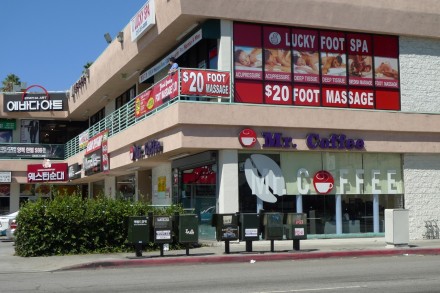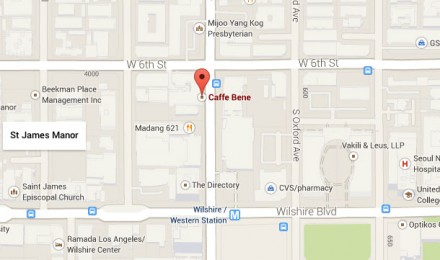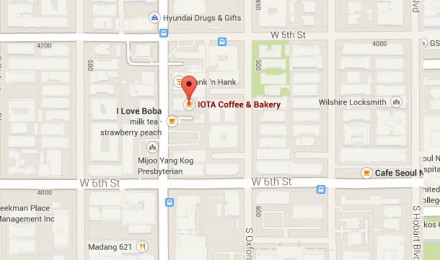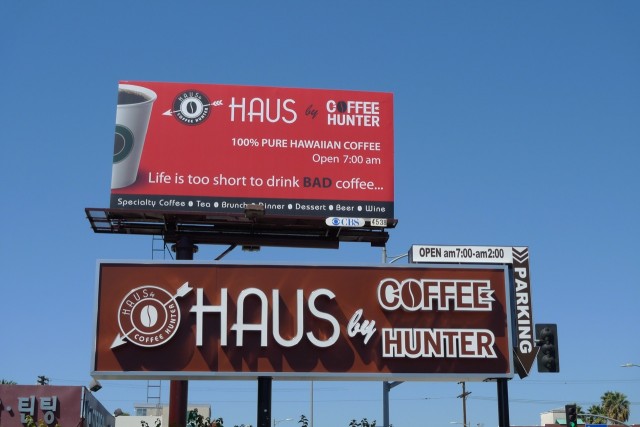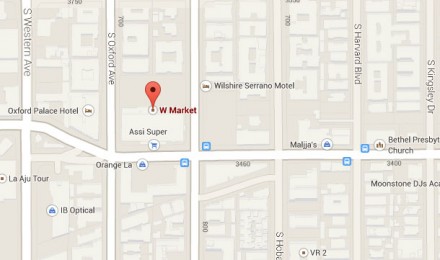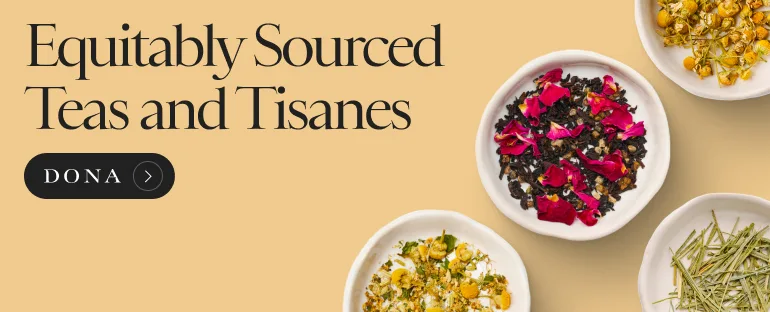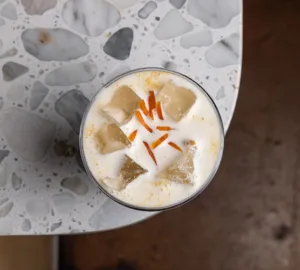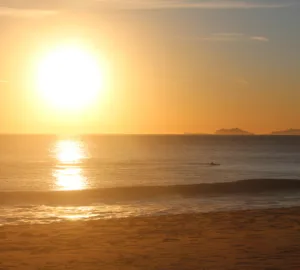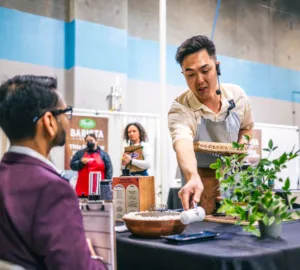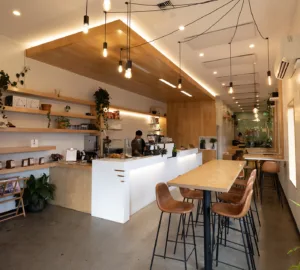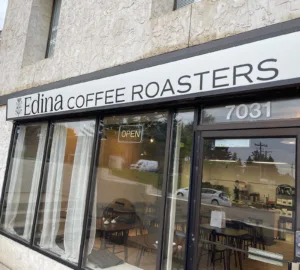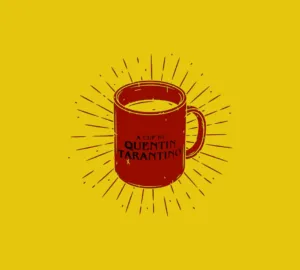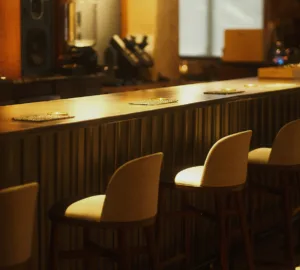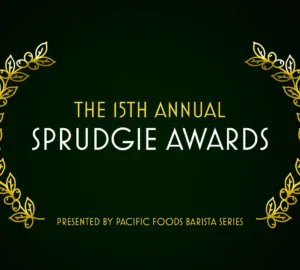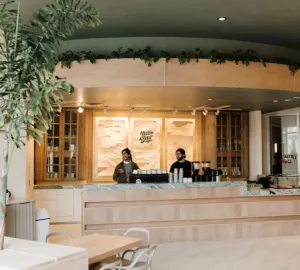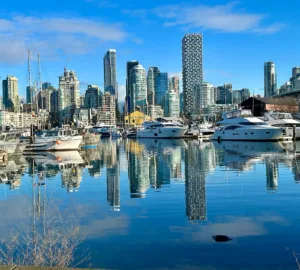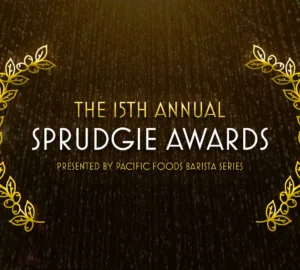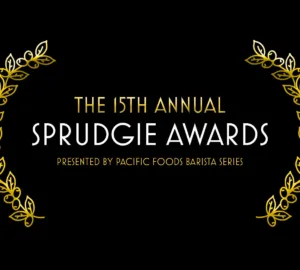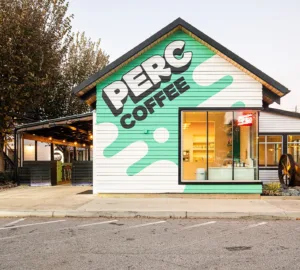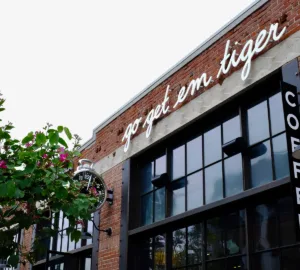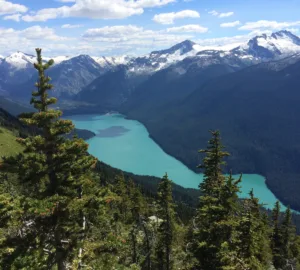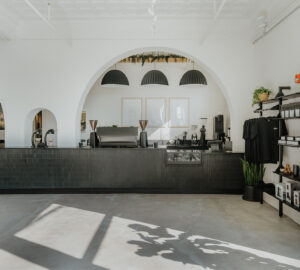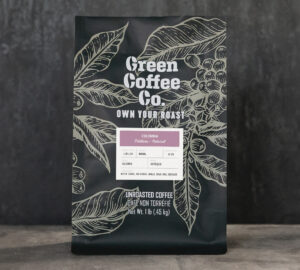Hazelnut lattes. Massive comfortable lounges. K-Pop videos. These are just a few of the things I experienced on a recent tour of Koreatown with my friend (and Associate Editor at Eater LA) Matthew Kang. The day was a crash course in modern Korean coffee culture, influenced by the exploding scene in Seoul but utterly rooted to the Koreatown neighborhood of Los Angeles. Checking out the traditional coffee shops, the colorful coffee emporiums and even a few contemporary coffee bars in the mix, I came away charmed and wowed by the depth and breadth of experiences available to coffee drinkers in this part of Los Angeles. Koreans really love to drink coffee, and my city – our city – is all the better for it.
My first stop with Matthew Kang was Caffe Bene. On first impressions, this place is huge and posh. There is a La Marzocco espresso machine, and various coffee drinks along with waffles, shaved ice, ice cream and more on the menu. My little macchiato is served topped with a few coffee beans…not exactly traditional in most traditions, but definitely adorable. From there, Matthew and I launched into a roving interview that took us to a wide variety of shops throughout K-Town – some big, some small. Mr. Kang, whose parents were born in Seoul, has a wide knowledge of today’s modern LA specialty coffee scene, and Koreatown’s unique place in it. I want to present our afternoon together in the form of a conversation, equal parts interview and expedition. Let’s go exploring!
Julie Wolfson: Why is Caffe Bene the best place to start our K-Town coffee tour?
Matthew Kang: I think Caffe Bene has over 900 locations in Korea and two here in K-Town. Nicholas Cho (co-owner of Wrecking Ball Coffee Roasters) talks about how there’s only one coffee chain in America that has over a thousand locations, which is Starbucks. In Korea there are 3 or 4 that have that are approaching 8 or 9 hundred. Tom N Toms is one. There used to be a Hollys Coffee here in Koreatown, and Caffe Bene is another one.
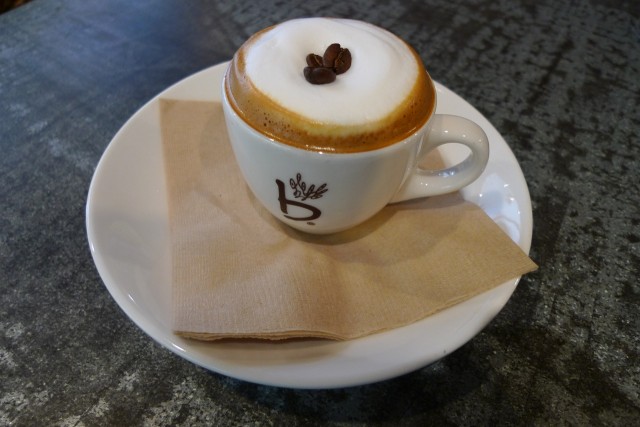
How would you describe Korean coffee culture?
Korean coffee culture stems from the idea of being a beverage where you get together and meet people. It is not necessarily fuel to start the day, which is why, when you look at Caffe Bene now during the morning, it is pretty empty. It’s really more of an afternoon and late night hang out. In Korea there are two things you do other than eating when you go out: coffee or drinking. People stay out drinking all night until 6 in the morning, like 5 bottles of soju throughout the night. It’s insane. Going for coffee is a way to hang out and talk. That’s why Korean coffee shops have great seating, and expansive space, nice ambiance. The coffee itself can be an afterthought.
How does that translate to the coffee community here in Koreatown?
What’s interesting about Koreatown is that you get a meld of some of the Korean coffee culture. In Korea, they are all about roasting in house. Then you have some more of the American aspects which are single origin, brewing coffee in a certain way, scaling it out, grinding fresh and dosing it, those specialty coffee applications. In Korea that is growing but people are adapting it more slowly, because this place (Caffe Bene) is the construct of what Korean people think a coffee shop should be like.
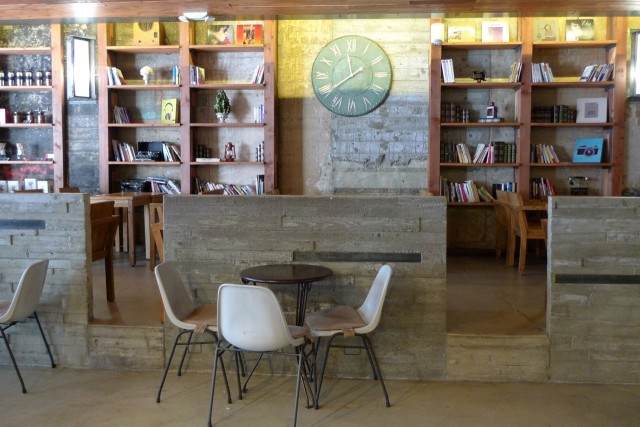
Koreatown here in Los Angeles is pretty huge, geographically speaking. Lots of people live here.
You have to think of K-Town as the equivalent of a single neighborhood in Seoul, just taken out and implanted into America. The mentality is the same. There is a huge Korean community that barely speaks English. They can pretty much survive only speaking Korean. You can do everything: buy groceries, fill up your gas, and go to the doctor. There are even Korean higher education schools. How do you translate the coffee culture? There are three coffee shops on every corner in Seoul so that mentality has transferred here. The good thing about LA is that real estate is a little easier to come by. That’s how you get large spaces. Mr. Coffee is a fairly large coffee shop. IOTA is massive. If Caffe Bene is exhibit A, then IOTA is Exhibit B. When you go in IOTA it’s like the Korean version of Handsome Coffee Roasters. They have an in-house roaster. They brew it with a lot of care. They do a pretty good job brewing drip coffee and espresso.
So here we are at IOTA. What should we order?
Hazelnut flavor is the quintessential sweet Korean coffee drink. Koreans probably started drinking coffee when Americas came over in the early 1900s as missionaries, and then again later on when the GIs came. There are Korean coffee packets of instant coffee that come blended with dry milk powder and sugar. They sell these packets at the grocery store for very cheap – 100 of them cost about $10. For a lot of older generations Koreans, that is what coffee is because that is what coffee was in the 50s during the Korean War. When the coffee culture developed, I feel like hazelnut was the classic flavoring that Koreans loved. Growing up we would always drink hazelnut coffee in our house. I still love it. It’s a guilty pleasure.
(We order a hazelnut latte. It arrives at the table with bear latte art.)
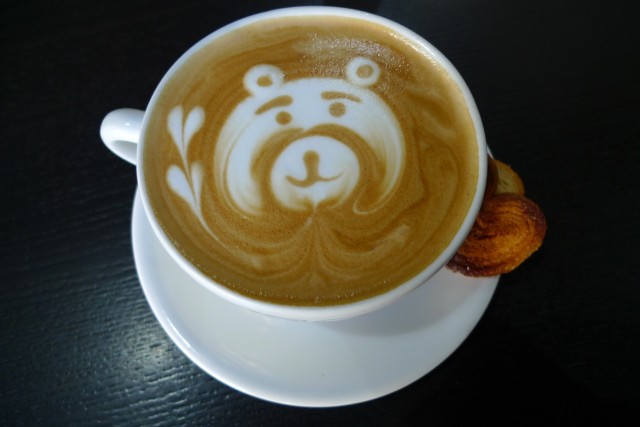
Sitting here at IOTA is kind of a sensory overload. What is going on here?
This is the ultimate Korean American coffee house. You can get Stone IPA, you can get a strawberry cake, and a siphon coffee. It’s like Psy’s music. It’s fun. It’s not taken too seriously. We get together with friends, drink coffee, eat some desserts, and hang out for 2 or 3 hours. Why do they serve French champagne with siphon coffees, and Italian desserts? Who knows. They even have a digital brew board with an instant twitter feed at this place…
Why are there so many places where coffee drinks are really expensive in K-Town?
In Korea itself, and here in K-Town, coffee is a status symbol. One of my friends went to a place and ordered a $13 coffee. Coffee was immortalized in Psy’s Gangnam Style. In Gangnam Style when he says ‘one shot’ he is referring to a shot of espresso. In Korea, people will buy a Starbucks coffee and sip it all day. They will carry it proudly in their hand, all day long, to show the world that they have purchased a Starbucks coffee. It is very expensive there. Korean coffee shops charge more because people are coming for the experience.
For someone who loves coffee, do you come to Koreatown to drink coffee or to socialize?
I think Korean coffee is finally happening where you will get some good coffee from behind the bar. Sometimes I will come here (IOTA) just to get a cup of coffee and hang out with my girlfriend. Or if I need to bring my laptop to get some work done, it’s a great place for that. At a Korean coffee house, you sit down. There is full service. I like that.
What is Korean style coffee?
What a Korean person wants in a cup of coffee seems to be vastly different than what a Scandinavian person wants. The ideal brew for Koreans is not rich and not heavily extracted. It is very light. It is a lot more delicate. I’m generalizing here, but they do not want high acidity or high complexity. The Korean idea of drip coffee is closer to diner coffee.
How much is K-Town like Seoul?
This intersection looks like Seoul. You have the subway, the buses, the insane traffic, tons of foots traffic, and at lesst 4 coffee shops. It’s crazy. Imagine this and multiply it by 2,000 blocks. Seoul is so big it makes Manhattan look small.
When did you first start drinking coffee?
I have been drinking coffee since I was about 12 years old. I remember going to Starbucks when I when the first one opened in Glendale. Most people don’t drink coffee that young, but coffee was never taboo in our house. My dad grew up in Brazil. He used to be a coffee farmer in Brazil in the 60s. When I was 8 to 10 year old if they were drinking coffee, I would ask if I could have some.”
When did it shift for you to meeting the roasters and baristas?
I started getting into coffee in college. I had a Melita filter and a grinder. I would grind my own coffee to order. I had tried LaMill and Jones, but Intelligentsia coming to LA was like the year that Jesus was born. It’s like BI and AI. I really feel that it totally changed the game. When they opened in ’06, I was still in college. I went there and had a shot of espresso and remember thinking, “Holy crap! This is amazing stuff!”
Do you feel that specialty coffee has a chance to take hold here in Koreatown too?
Matthew Kang: This place will draw the younger crowd. They are serving Handsome and Coava. Customers might be people who have been to Handsome and Intelligentsia. They want to be more like Café Dulce. Café Dulce is serving specialty coffee, plus sweet drinks and donuts and rotis.
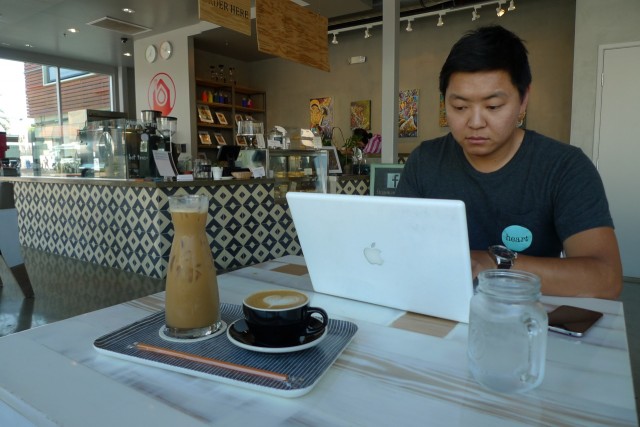
I have been to Haus Dessert Boutique (back out on 6th Street) several times for shaved ice. Who is the Coffee Hunter? What is going on there at Haus?
He’s the guy that bought Haus from the guy who started IOTA. Haus was the first dessert coffee shop by the guy that owns Mu Dae Po then sold it to the Coffee Hunter. The Coffee Hunter sources coffee around the world and has connections with Hawaii.
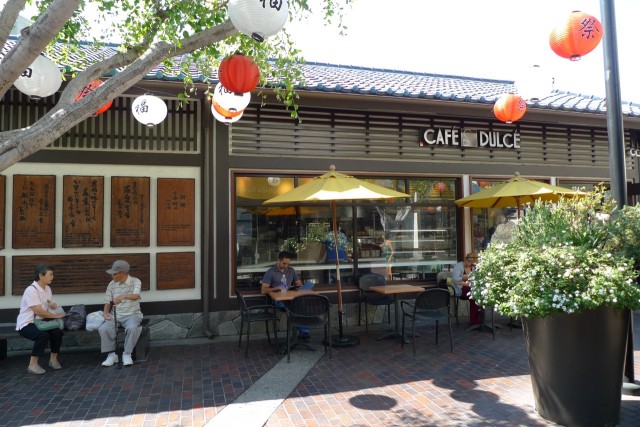
You mentioned Café Dulce a moment ago – what’s going on over there in Little Tokyo, where Dulce is?
That whole place, the Little Tokyo Plaza, is owned by Koreans, just like Chinatown is owned by the Vietnamese. Café Dulce is owned by James Choi, who is also Korean. I went to college with James. That’s why Brew/Well is unique – serving this level of specialty coffee in Koreatown is uncommon. I like the casualness of the Korean coffee culture. There are some shades of seriousness, but does anyone care that it is a single origin cold brew that was made in a toddy? I ask, “Does it taste good? Is it presented in a comfortable place?” That is more important.
View K Town Coffee Shops in a larger map
Thanks to Matthew Kang, and look for him at Scoops Westside, serving up luscious bowls and cones of Tai Kim’s ice cream (including their signature brown bread dotted with Grape Nuts). They make a pretty darn good cup of coffee there as well. Read more Matthew Kang on Eater, and at Mattatouille.com.
Julie Wolfson (@JulieWolfson) is a staff writer for Sprudge.com.











